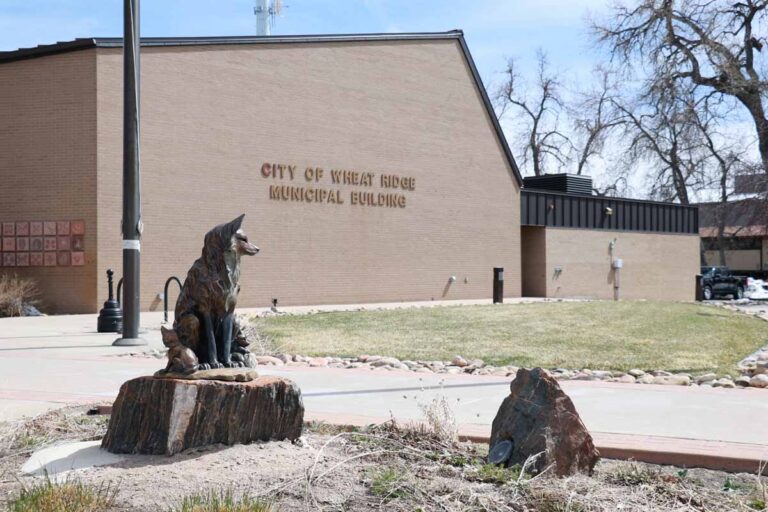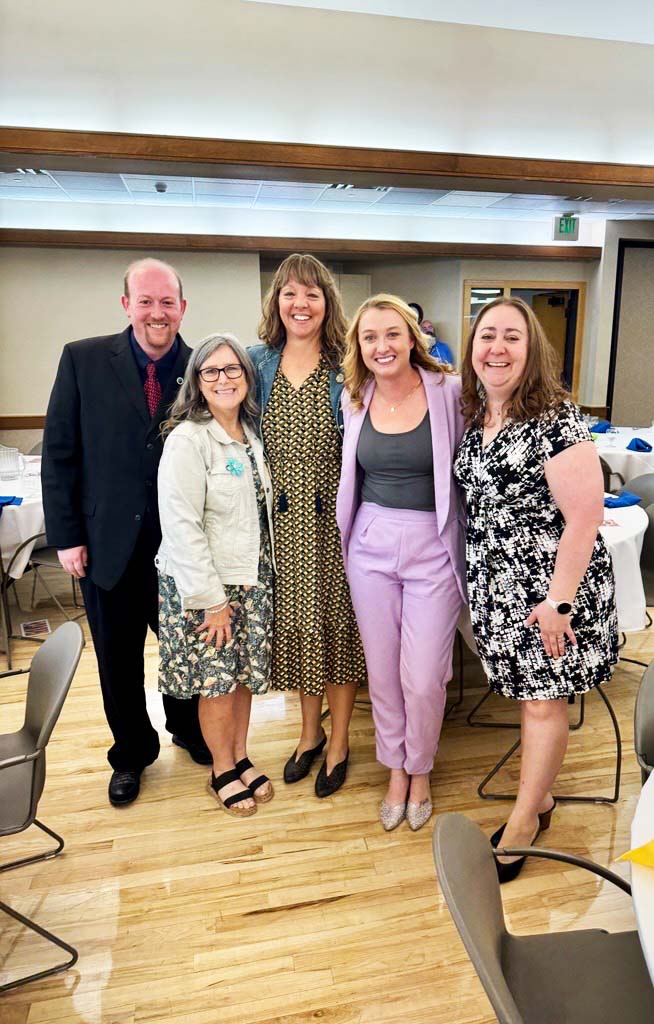Drive along 38th Avenue past the north border of SCL Lutheran Medical Center campus and you can’t help but notice the lovely Lutheran Chapel. Designed by master architect Frank W. Frewen and now part of the older face of the campus, it juts out past the other buildings, as if to proclaim its importance and continuing relevance.
I’ve admired the chapel’s architecture from the outside for several years, so I jumped at the chance recently to view the interior. The main entrance on 38th is closed, so after checking in at the main hospital entrance, the trek down long hospital corridors and, surprisingly, up a flight of stairs landed us at the chapel’s west entrance, close to the altar at the south end. (To my surprise, nestled under the sanctuary on the ground floor is an auditorium, used by the Lutheran Auxiliary for various social and fundraising functions, and also for weekly hospital staff meetings.)
Emerging from the elevator, I found myself in a small anteroom featuring a large religious painting of the Good Samaritan; a few steps away inside the sanctuary stood a curiously spot-lighted baby grand piano. Soothing piped-in music added to the aura of tranquility.
The chapel interior is magnificent. The building is often referred to as Romanesque because of its round arches and massive vaulting supported by heavy columns, but the style is also Spanish. The designer meant the building to reflect the architecture found in the villages in the Pyrenees mountains along the Spanish-French border where the terrain is similar to the Rocky Mountain foothills viewed from the Lutheran campus. The stained-glass windows that line the east and west walls each have a spiritual meaning and were given as memorials by friends of the hospital.
As commanding as the beautiful rose window above the altar was, I was equally intrigued by the wood carving over the center portal at the back of the chapel. An unnamed carver from Ostfriesland in Germany made the lemon wood carving around 1548. Highly valued, many museums sought the carving for their collections; however, a Mrs. Alma Peterson of Chicago presented the carving as a gift of gratitude to the Evangelical Lutheran Sanitarium in the 1930s.
Originally called the Chapel of the Good Samaritan, the building was dedicated Feb. 26, 1933, and was part of the Evangelical Lutheran Sanitarium. It was rededicated in 1980 as the Herman F. Feucht Chapel of the Good Samaritan. Feucht was the force who led the appeal in 1929 to support the first expansion of the TB sanitarium and include construction of the chapel.
The Jeffco Historical Commission calls the chapel one of the county’s finest examples of sacred design, a place of spiritual comfort, guidance and healing for countless people for nearly a century. I agree and hope this extraordinary chapel can be preserved and remain in service for many centuries.






